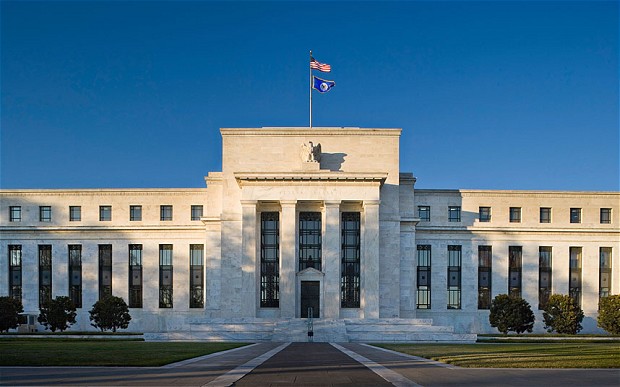Fed says to be patient with rates

The Federal Reserve believes US growth will “step down” this year from last year’s rapid pace amid rising global risks, including from tense trade relations, according to minutes released on Wednesday (Feb 20).
And given the greater uncertainty about the economic outlook, the central bankers said they were not sure what their next move would be, according to the minutes of the Fed’s last policy meeting of on Jan 29-30.
Though “several” participants thought a rate increase would be necessary only if inflation unexpectedly surged, “several other participants indicated that, if the economy evolved as they expected, they would view it as appropriate to raise the target range for the federal funds rate later this year.”
Those split views suggest that the central bank may not yet have ended its three-year campaign to raise interest rates, but has merely put it on an extended pause. In January the Fed surprised markets by saying it would be patient about adjusting its target range for short-term interest rates, now between 2.25% and 2.5%.
While the economy is expected to remain solid, the waning stimulus from last year’s tax cuts will contribute to the slowing, with “GDP in 2019 to step down somewhat from the pace seen over 2018,” the minutes said.
The Fed raised the benchmark lending rate four times last year but after the last increase in December, policymakers found “the economic outlook had become more uncertain,” the minutes said.
As financial markets became roiled amid the trade war between the United States and China, policymakers kept interest rates on hold last month, and sent clear signals that they would be in no hurry to raise them again soon.
The tone of the minutes was “decidedly noncommittal,” according to Ward McCarthy, an economist at Jefferies LLC.
Meanwhile, Fed policymakers do seem to have coalesced around a plan to leave their balance sheet permanently bigger than it ever was in the past, the minutes show.
“Almost all participants thought that it would be desirable to announce before too long a plan to stop reducing the Federal Reserve’s asset holdings later this year,” the minutes said.
The Fed absorbed government bonds and mortgages in the wake of the 2007-09 recession but policymakers began trimming those holdings in the final months of 2017.
Research staff presented options at the meeting for “substantially slowing” the runoff of the Fed’s balance sheet, “at some point over the latter half of this year.” The runoff is currently capped at $50 billion a month.
Bob Miller, Head of US Multi-Sector Fixed Income at BlackRock Inc, said he is now expecting a balance sheet plan from the Fed by the May meeting minutes, a decision on the matter by June and a halt to the Fed’s runoff by October, if not July. This will help US financial conditions and markets, he said.
“The fact is that the Committee has spent three consecutive policy meetings discussing the balance sheet in detail, and to us that suggests some urgency in addressing the questions surrounding its future,” Miller said in a note.

